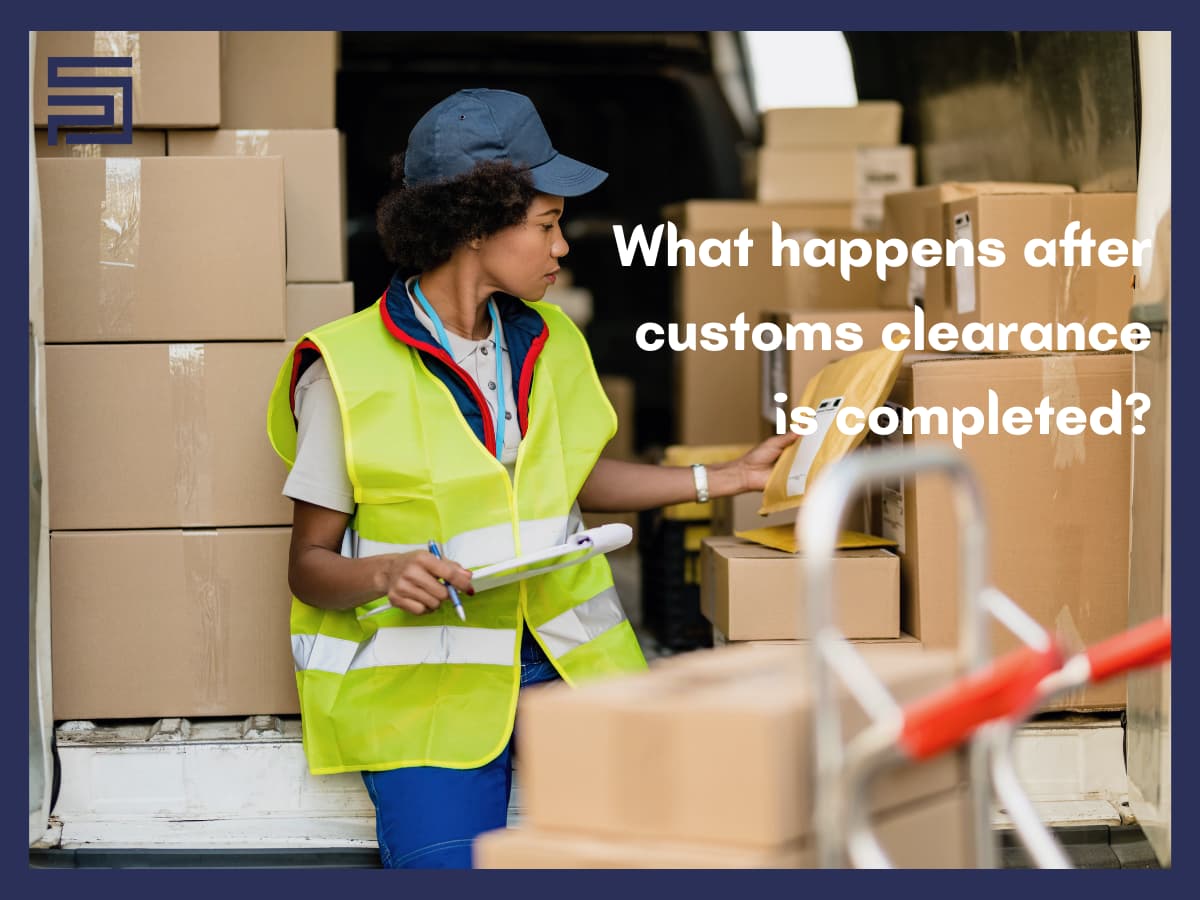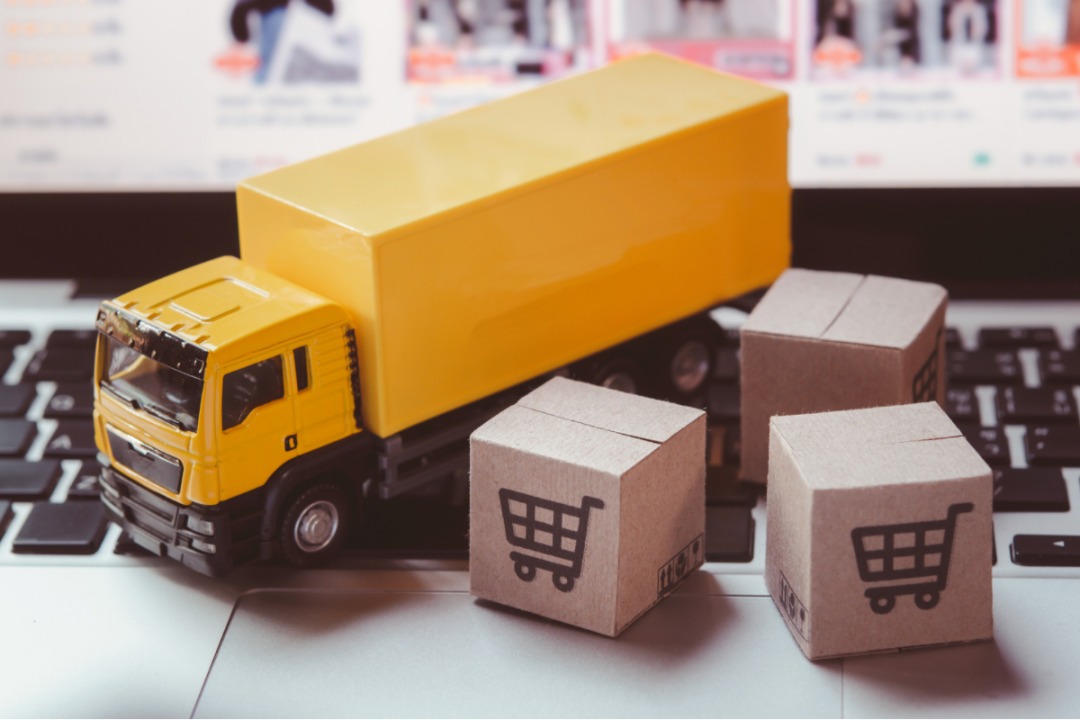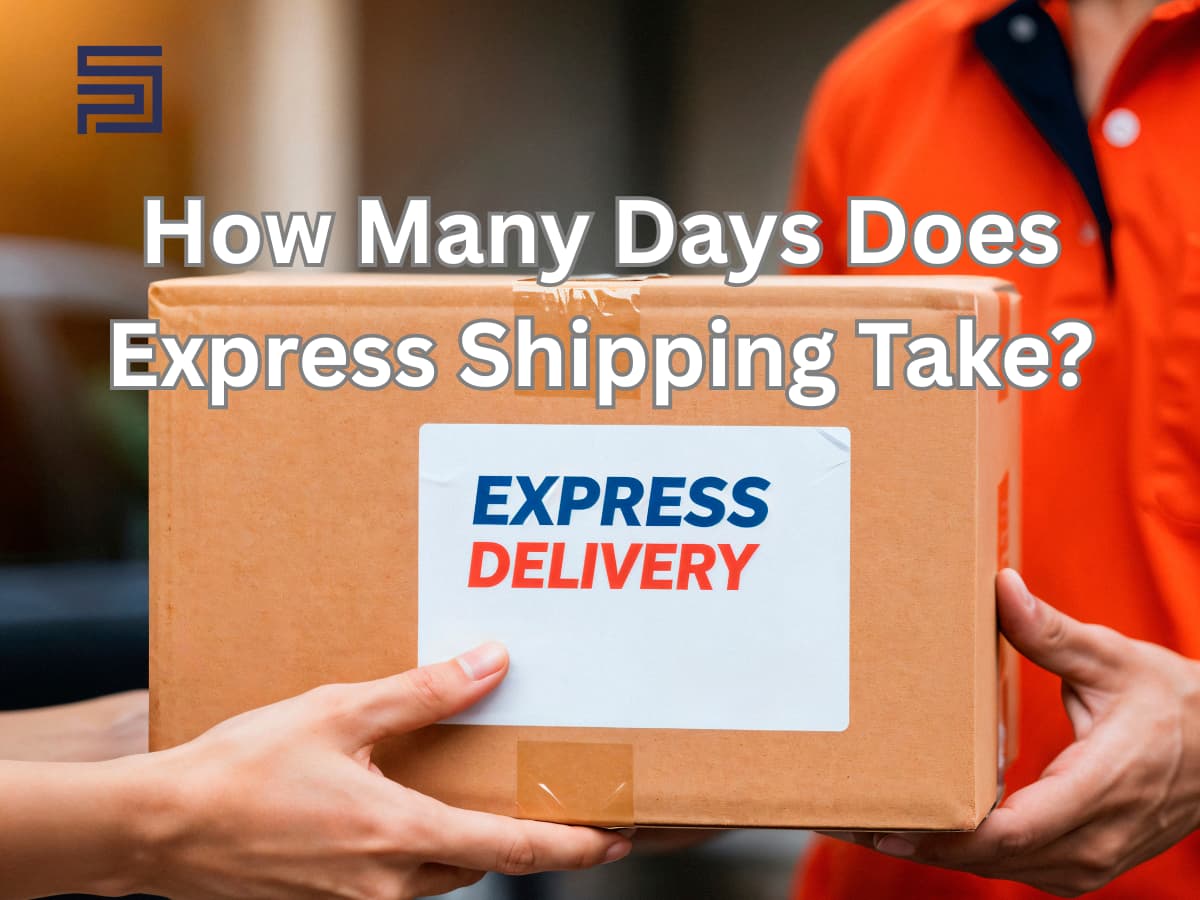When you see “customs cleared” in your shipment tracking update, it means document inspection and import duty payment steps have been completed. The customs authorities have authorised the release of your goods.
But what happens next?
Immediate Next Steps After Customs Clearance
The next steps can vary depending on the type and size of the shipment, but in general, most cargo goes through three key stages.
1. Release to carrier or freight forwarder:
When customs grants release, the carrier or your freight forwarder receives an electronic or physical release order. That authorisation tells the terminal, port, or airport staff that they may hand the shipment over.
For pallets and full-container loads, this usually means a formal handover to the trucking company or the forwarder’s local agent. For small parcels, the local postal service or courier is notified to begin last-mile processing.
At this stage, you should expect an update in tracking and a notification from SARA confirming the handover and the next expected movement.
2. Transfer from the customs facility to the domestic network:
After handover, the shipment is moved out of the customs area into the domestic transport network. The mode of transfer depends on the shipment type and the service level:
A. Truck:
Most common for inland deliveries, typically same-day or next-day pickup from the port or airport for nearby destinations.
B. Rail:
Used for long-distance land moves where rail connectivity exists; transit times vary by route and schedule.
C. Air:
For urgent goods, cleared airfreight may be re-booked onto the next available domestic flight.
During this stage, goods may be consolidated, re-manifested, or palletised for efficient routing.
At SARA, we continue to monitor and provide status updates to our clients while their goods are in transit until the shipment reaches the local sorting hub.
For goods that would not require re-sorting, their destination in this stage depends on the client's preference.
You can choose to instruct our team to send your goods to our warehouse in the country and store them there.
Or you have your shipment delivered to you wherever you are.
3. Possible placement in a bonded warehouse:
If duties, taxes or importer instructions are still unresolved, customs can allow the goods to move into a bonded warehouse rather than into free circulation.
Bonded storage lets you delay duty payment while the goods are held under customs control.
This stage is only useful for you if:
- You want to re-export the shipment to another country,
- You are waiting for an inspection by an agent, or,
- You need time to arrange payment or further documentation.
While in bond, you cannot sell or consume the goods without completing the formal withdrawal and duty payment process.
Bonded storage usually incurs handling and daily storage fees, so we advise our clients to use it for intentional reasons, and we work to avoid this stage as much as we can.
What you should expect and do next:
- Expect an immediate status update from SARA once customs releases the goods.
- Confirm that your shipment should be moved to the warehouse or to a specific location (this is usually discussed in the early stage of the shipping process).
- Keep all release documents and proof of payment handy. This speeds up any post-release audits or claims.
How long after clearing customs does delivery usually take?
Short answer: It depends.
But for most routine shipments, you can expect delivery to be within 24–72 hours after customs clearance. Express courier shipments often move faster (sometimes same-day or next-day).
At SARA, we are constantly seeking better ways to deliver to our clients as quickly as possible. You can trust us to meet the expected time of arrival (ETA).
Check out this guide for details on how long the main customs clearance process takes.
Common reasons delivery is delayed even after "clearance completed".
A. Post-Clearance Issues:
1. Mode of transport:
Air freight and express courier services typically hand your cargo to the local delivery network almost immediately after customs clearance.
But ocean shipments require deconsolidation at a terminal or Customs Freight Station (CFS) and usually take longer than that of air freight..
2. Congested Ports:
Even with customs clearance, a backlog at the port can cause significant delays as goods wait to be unloaded from the port and transported.
3. Transportation and Handling:
Once cleared, goods may experience delays in local transit, loading, and unloading, or simply waiting for available transport.
The distance from the port to the final destination, along with the mode of land transport used, also affects how quickly the goods will reach you.
4. Communication and Collaboration:
Delays can arise from miscommunication or a lack of coordination between different parties involved in the delivery process, such as our freight forwarders, carriers, clients, and delivery teams.
At SARA, we maintain seamless communication between all parties involved, including you, and ensure you receive timely updates at every stage.
B.Customs-Related Issues (Even After Clearance):
5. Incomplete or Incorrect Documentation:
While clearance might be initially successful, errors or omissions in documents can be discovered later, leading to delays while corrections are made.
6. Suspicious Shipments:
Customs may conduct additional inspections or checks if they suspect non-compliance with regulations or security issues, even after initial clearance.
7. Taxes and Duties:
If taxes and duties haven't been paid, or if customs suspect an undervaluation of goods, they may hold the shipment until the issue is resolved.
8. Security Concerns:
Shipments can be delayed if they raise security concerns, even if customs clearance is initially granted.
Export shipments || What happens after export customs clearance is completed?
1. Handover to the carrier and consolidation
After customs issues the release, the exporter’s carrier or freight forwarder arranges pickup from the export warehouse or terminal.
For less-than-container loads (LCL) and consolidated air freight, cargo may be moved to a consolidation centre where it’s palletised or re-bagged and consolidated with other shipments bound for the same vessel or flight.
2. Pre-loading handling and stuffing (for FCL) / build-up (for LCL):
Full containers (FCL) are stuffed and sealed at the shipper’s premises or a packing facility, then trucked to the port container yard.
LCL cargo is unpacked from local handling units, inspected if required, and re-packed into consolidated units. The forwarders in our team prepare the cargo for physical loading, which includes labelling, securing, and final documentation checks.
3. Carrier acceptance and manifesting:
The carrier (shipping line or airline) accepts the cargo and adds it to the ship/flight manifest.
Acceptance onto the manifest is the carrier’s confirmation that your goods are booked and scheduled for the outbound service.
This is an important milestone; it precedes physical loading or departure.
4. Physical loading and departure:
Containers are loaded onto the vessel, or freight is loaded onto the aircraft, according to the carrier’s schedule.
For sea shipments, sailing schedules and berth windows determine exact departure times; for air shipments, cargo is loaded onto the assigned flight.
Please note that export clearance does not always mean immediate departure; you may need to wait for the next scheduled service.
5. Export documents issued:
Once cargo is accepted and/or loaded, the carrier issues the transport documents (Bill of Lading for sea, Airway Bill for air).
These documents prove the goods have been taken on board and are used by the consignee for import customs clearance at the destination.
6. Notifications & status updates
Your freight forwarder or carrier will update tracking and send departure confirmations.
Typical messages include: “Accepted by carrier,” “Loaded on board,” and “Vessel departed” or “Flight departed.” These notices are the exporter’s assurance that the shipment is en route.
At SARA, along with the notification, you receive a tracking number that you can use to track the shipment's movement on our tracking tool.
7. Post-departure compliance and post-clearance controls:
Even after departure, customs authorities may perform post-clearance audits or request additional documents.
Exporters should retain records (commercial invoice, packing list, export declaration, licences) until the statutory retention period ends. If discrepancies are found later, customs may contact the exporter or broker for clarification.
Let SARA Handle the Post-Clearance Journey
At SARA, we know that customs clearance is only half the story; what truly matters is what happens afterwards. That’s why our role doesn’t stop once the shipment is released.
From the moment your goods are cleared, we coordinate seamlessly with customs facilities to ensure smooth handovers, monitor every movement, provide real-time updates through our tracking tools and step in quickly to resolve post-clearance challenges.
Whether it’s imports or exports, our mission is simple: to make sure your goods move efficiently, securely, and with full visibility until they reach their final destination.
Clear goods with SARA and experience a post-clearance journey that’s seamless, transparent, and dependable.
Contact us today.
Frequently Asked Questions (FAQ):
How long after clearing customs will my package be delivered?
Most routine shipments are released and move into domestic delivery within 24–72 hours, but times vary by carrier, mode (air/sea), local hub congestion and whether duties or inspections apply. Use the SARA tracking tool for exact expectations.
What does “customs clearance completed” mean on my tracking page?
It means customs has reviewed your paperwork, any required duties/taxes are assessed/paid, and the shipment is authorised to leave customs. The next step is handover to the local carrier from SARA for delivery.
Can customs release a shipment and still hold it later?
Yes. World Customs Organisation (WCO) and national customs officers allow post-release audits or recalls if problems are found. Customs can still request documents or impose post-clearance checks. This is rare but possible.
What happens after export customs clearance?
After export clearance, the goods are handed over to the carrier, consolidated if necessary, and then prepared for departure on the scheduled transport.






Comments
Please log in to leave a comment.